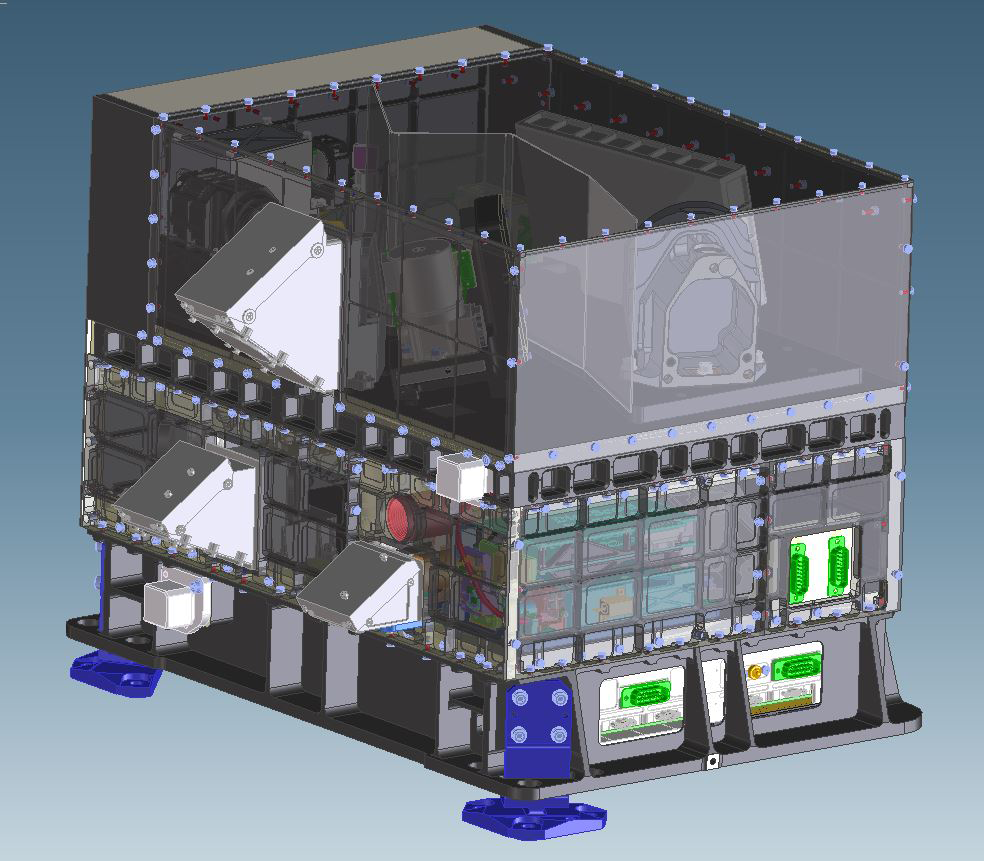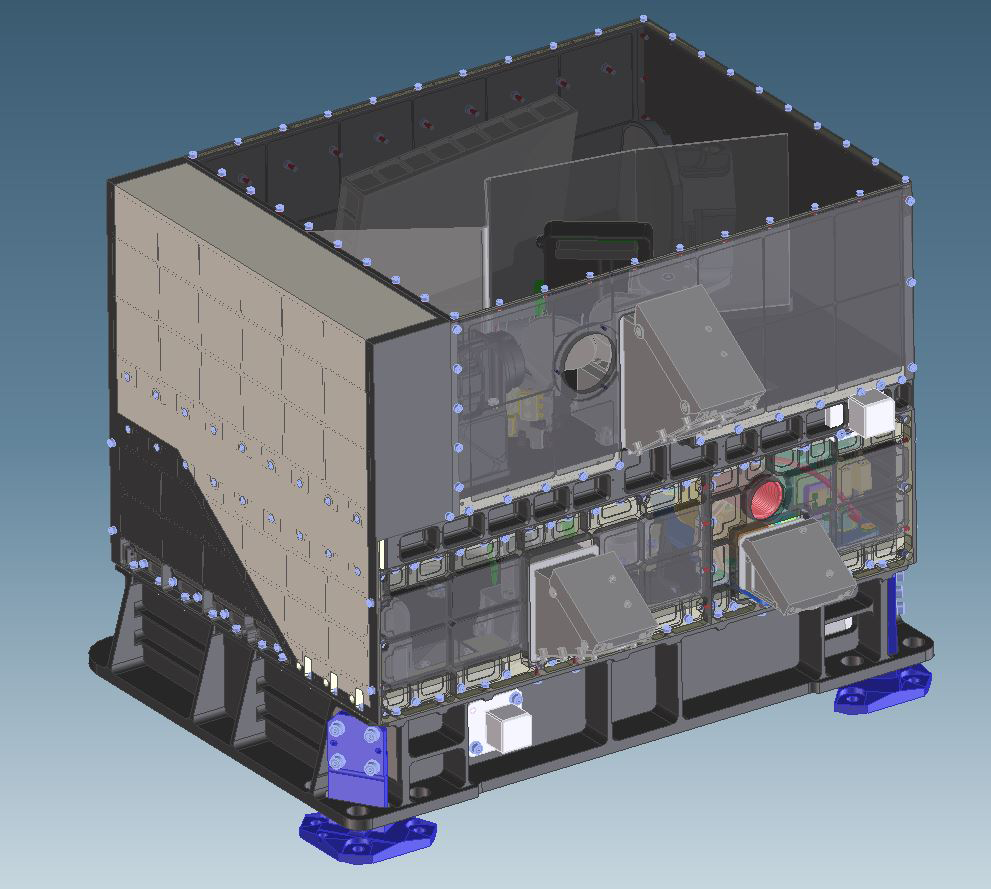 |
||||
|
ExoMars NOMAD instrument NOMAD is a 3-channel spectrometer. 2 channels work in the infra-red and build upon the expertise of the Royal Belgian Institute for Space Aeronomy (BIRA-IASB) with its successful SOIR (Solar Occultation in the Infra-Red) instrument which is on-board ESA’s Venus Express mission (VEX). The 3rd channel works in the UV-visible range.
NOMAD’s solar occultation channel (SO) is a copy of SOIR/VEX. The Limb, Nadir and Occultation channel (LNO) is an improved version of SOIR, more adapted for fainter light sources as it will not only measure in solar occultation but also in nadir mode, i.e. looking directly at the sunlight reflected from the surface and atmosphere of Mars. The modified design includes a larger entrance slit to increase the amount of light entering the optics and a new acousto-optical tunable filter to maximise throughput. The UV-Visible channel (UVIS) is based on a design for a previous Mars lander made by the Open University, UK. It will measure in both solar occultation and nadir modes. Below is a video showing the NOMAD design: Three models of the instrument were built, as required by ESA:
NOMAD development and construction was carried out by the prime contractor, OIP, Oudenaarde, in collaboration with expert partners in Spain, the UK and Italy. The central electronics unit and firmware were designed by Spanish colleagues who worked on Rosetta, Mars Express and Venus Express, and were built by Thales Alenia Space Belgium (also known as ETCA). UVIS was designed and built by Lambda-X, Nivelles; its electronics were designed and built by the Mullard Space Science Laboratory, UK. The Royal Belgian Institute for Space Aeronomy (BIRA-IASB) designed much of the SO and LNO channels, including the electronics and ground support equipment. The institute also managed all of the tasks carried out across Europe and maintained the documentation necessary for ESA. They also took care of the planetary protection aspects necessary for missions going to Mars, alongside their project management responsibilities. Testing and science performance were also the responsibility of the institute.
NOMAD is a 3-channel spectrometer. 2 channels (SO and LNO) work in the infra-red and build upon the expertise of BIRA-IASB’s successful SOIR The 3rd channel (UVIS) work in the ultraviolet-visible range and builds upon the UVIS instrument that was developed for the ExoMars Lander.
NOMAD/SO The SO channel is a copy of the highly successful SOIR instrument on board Venus Express. The infra-red SO channel operates by observing up to 6 small slices of the full spectra range each second. This allows them to observe several different target molecules that absorb at different wavelengths, whilst maximising the signal to noise ratio for each. A solar occultation lasts about 5 minutes, allowing us to take 300 spectra of each wavelength and profile the atmospheric composition from the top of the atmosphere down to almost the surface (depending on dust levels).
NOMAD/LNO The LNO channel is the limb, nadir and occultation infra-red channel. It is an improved version of SOIR, with changes to make it more sensitive to the lower light levels we will see during nadir observations of the planet Mars. The changes to be made to SOIR include a new AOTF that will allow more light through, a wider slit for the front end optics, redevelopped electronics to include more computing power and a change in cooling. SOIR uses a cyrocooler to chill the detector and increase the instrument's sensitivity to the infra-red light under study. This cooler is used for about 20 minutes per day at Venus, but for nadir observations at Mars it will be on far longer. This means we need to find a cooler with a longer lifetime. We will also cool a larger volume of the instrument, including some of the optics, to minimise thermal background. This work will be carried out in collaboration with thermal experts in Madrid, Spain. The infra-red LNO channel can also observe up to 6 spectral regions per measurement but may have to integrate longer than 1 s in order to have enough signal to detect trace gases. Nadir measurements can only determine the total column of gas between the instrument and the reflecting surface, but can map variations across the planet, along the ground-track of the orbit. This way we can observe differences between the pole and the equator, and over the lifetime of the mission, also differences with the Martian seasons.
NOMAD/UVISThe additional UVIS channel, supplied by our UK partners, will extend the wavelength range from IR to UV and visible wavelengths, giving the NOMAD suite access to ozone, sulphuric acid and aerosol studies. This ultra-light and very capable instrument had been selected for the Exomars lander, but was cancelled when the lander was cancelled in favour of a double rover mission in 2018. UVIS will be adapted for use in orbit and will image its entire spectral range in each observation of 1 second, covering several interesting molecules and giving more information about aerosols in the atmosphere.
|
|||


.jpg)
.jpg)
.jpg)